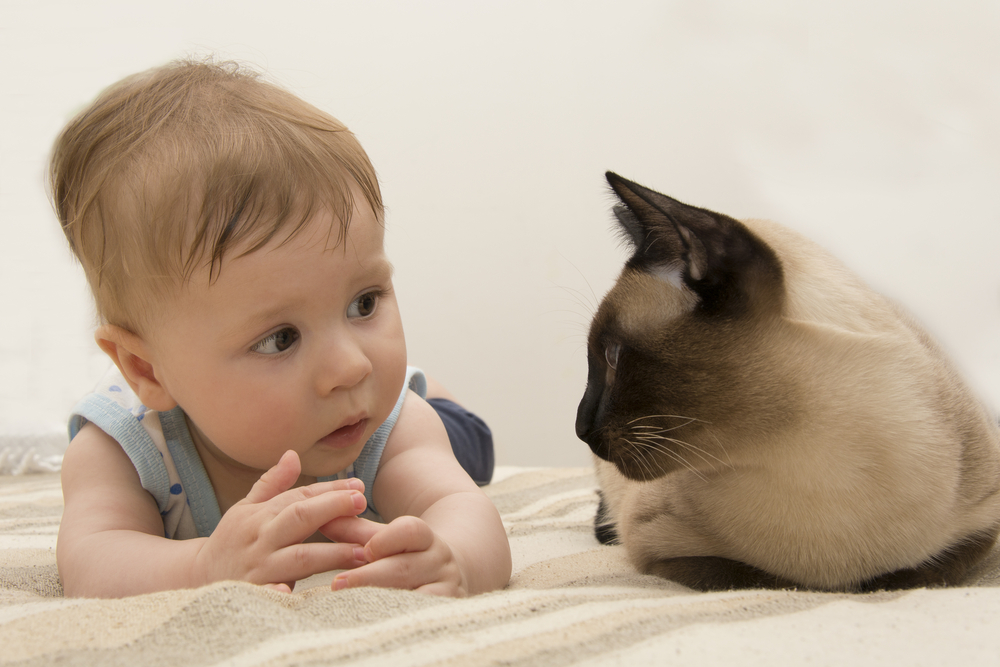Be Careful What You Say — Your Cat May Be Listening
Posted on Categories Discover Magazine

Cats have a reputation for being distant and aloof, although people who share their homes with cats often disagree with that. But even the most devoted cat lovers might be surprised by the results of a new study.
Saho Takagi, an animal behavior researcher at Azabu University in Kanagawa, Japan, and her colleagues adapted a method often used with human babies to test cats’ ability to learn words. The cats — 31 of them — aced the test. In fact, they learned the words faster than the average 14-month-old human.
Word Association for Cats
Takagi recruited cats from cat cafés and from households near the university and tested each cat individually in their own homes, including those who lived in cafés. This was important, explains Takagi, because cats have a strong fear of novelty and unfamiliar people and places.
“By using Japan’s well-developed cat cafés, we were able to work with cats accustomed to strangers, allowing us to carry out the experiments more effectively,” she adds.
Takagi and colleagues showed the cats two different images on the screen of a laptop computer. One was a cartoon sun, the other a unicorn. While the sun was on screen, an audio of the cat’s owner repeated the nonsense word “parumo.” The image of a unicorn was accompanied by the owner’s voice repeating the nonsense word “keraru.”
Then, the researchers played the audio and video again, but this time, they mixed things up. Half the time the cats heard “parumo,” they saw a visual of a unicorn. And half the time they were shown an image of the sun cartoon, they heard the word “keraru.”
When you play this trick on human infants, the babies indicate they’ve caught onto the switcheroo by looking longer at the screen when the word does not match the image they’ve come to associate with it. And so it was with the cats. On average, the cats spent 33 percent more time looking at the screen when the picture did not match the word they’d learned to expect.
Perhaps the biggest surprise was that the cats learned to associate the word with the image after only two nine-second exposures. When faced with a similar test, a typical 14-month-old human takes four 15-second exposures to make the association.
Read More: 8 Do’s and Don’ts for Communicating with Your Cat
Is this Behavior Unique to Just Cats?
This is not the first research to suggest that cats can understand at least some human language. A 2019 study found that cats likely recognize their own names. But if the results of Takagi’s study hold up to further scrutiny, it could suggest that cats have evolved an innate ability to learn some human language.
If so, that would be fascinating, though perhaps not surprising. “Cats have lived in symbiosis with humans for approximately 10,000 years, so this ability may have developed through that process,” says Takagi, though she is careful to point out that this research only suggests that possibility. The case would be strengthened, she says, by comparing close species and demonstrating that this ability is unique to domestic cats.
Janet Werker is a developmental psychologist at the University of British Columbia who studies language acquisition in infants. She’s one of the researchers who developed the test for babies based on Takagi’s experiment. Werker told Science that because of differences in the way her experiment and Takagi’s were conducted, it’s not clear that adult cats learn language faster than human babies do.
But besting babies is not the point of the research. The results suggest that cats can and do form associations between pictures and the words they’re hearing. Takagi says that she believes people underestimate cats’ abilities. Her message for people who live with cats? “Please talk to your cats often — they’re listening!”
Takagi is currently investigating whether cats can distinguish between a foreign language and the language their humans speak.
Read More: 10 Things You Have Always Wanted to Know About Cats
Article Sources
Our writers at Discovermagazine.com use peer-reviewed studies and high-quality sources for our articles, and our editors review for scientific accuracy and editorial standards. Review the sources used below for this article:
Avery Hurt is a freelance science journalist. In addition to writing for Discover, she writes regularly for a variety of outlets, both print and online, including National Geographic, Science News Explores, Medscape, and WebMD. She’s the author of Bullet With Your Name on It: What You Will Probably Die From and What You Can Do About It, Clerisy Press 2007, as well as several books for young readers. Avery got her start in journalism while attending university, writing for the school newspaper and editing the student non-fiction magazine. Though she writes about all areas of science, she is particularly interested in neuroscience, the science of consciousness, and AI–interests she developed while earning a degree in philosophy.